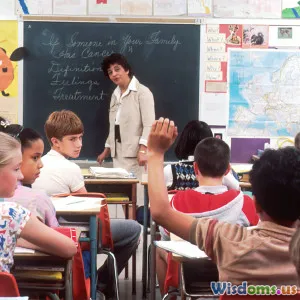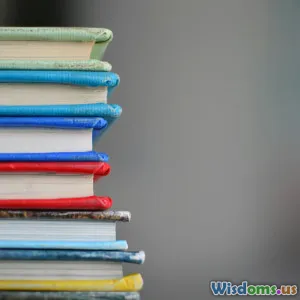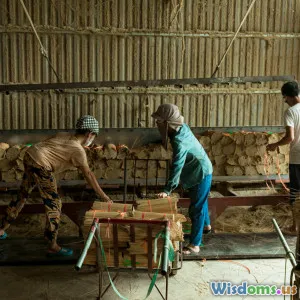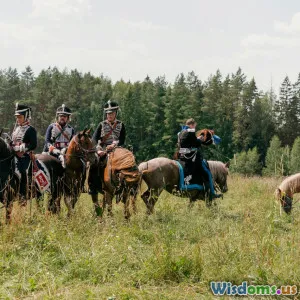
What We Can Learn from Japan’s 19th Century Curriculum Reform
8 min read Explore lessons from Japan's 19th-century curriculum reform shaping modern education worldwide. (0 Reviews)
What We Can Learn from Japan’s 19th Century Curriculum Reform
The rapid transformation of Japan from a feudal society into a modern industrial nation in the late 19th century is one of the most fascinating success stories in history. At the heart of this transformation was a sweeping educational overhaul known as the Meiji Curriculum Reform. Understanding this landmark reform offers profound insights for educators, policymakers, and learners aiming to balance tradition, innovation, and societal needs today.
In this article, we will journey through the historical context, the core elements of the reform, and most importantly, the enduring lessons that the 19th century Japanese educational revolution teaches us about crafting effective, forward-thinking curricula.
Historical Context: Japan at the Crossroads of Tradition and Modernity
In the early 1800s, Japan was under the Tokugawa shogunate's rule, a period marked by seclusion (sakoku), rigid social classes, and a Confucian curriculum emphasizing moral ethics and classical studies. Education was mostly confined to the samurai and select urban elites, aiming to produce bureaucrats and moral leaders grounded in Confucian ideals.
However, by 1868, the Meiji Restoration radically shifted the political landscape. The new government aimed to catapult Japan into a competitive global power through modernization, industrialization, and national unity. Education became a critical tool to achieve these goals.
To illustrate the urgency: by the 1870s, Japan faced the daunting challenge of creating a literate, skilled populace ready for modern challenges—something unprecedented given the previous limited access to formal education.
The Core of the 19th Century Curriculum Reform
1. Universal and Compulsory Education
One of the landmark decisions was the 1872 Gakusei or Education System Order, Japan’s first nationwide education law, mandating universal schooling for boys and girls aged 6 to 14. Before this, education was a privilege. Within a decade, enrollment rates skyrocketed, surpassing many Western countries.
Example: By 1890, literacy rates in Japan reached nearly 90%, a remarkable feat considering that nations like the United States were only around 80% at the time.
2. Balancing Western Knowledge and Japanese Tradition
Rather than wholesale adoption of Western curricula, Japan pursued a synthesis:
- Preserving Moral Education: Confucian ethics became reshaped as “Moral Education” (dōtoku), reinforcing loyalty, social harmony, and perseverance.
- Incorporating Science and Technology: Subjects like mathematics, natural sciences, and modern geography were introduced to align education with global industrial advances.
As scholar Merry White notes in The Japanese Educational Challenge, this blend ensured modernization didn't come at the cost of cultural identity.
3. Centralized Curriculum Framework
The Meiji government standardized textbooks and syllabi nationwide. This centralized control ensured consistency, fairness, and allowed swift dissemination of modern knowledge. It also fostered national identity, important in a country newly unified after centuries of feudal divisions.
Data: By 1886, 98% of schools used government-approved textbooks, drastically reducing regional disparities.
4. Teacher Training and Professionalization
Recognizing teachers as critical change agents, Japan established teacher training colleges (normal schools) to enhance pedagogical skills. This investment in teacher quality underpinned the success of reforms.
An interesting comparison: Contemporary studies show teacher quality strongly correlates with student outcomes, highlighting Japan’s forward-looking strategy.
How the Reform Transformed Society
Economic Growth Fueled by Education
Japan’s curriculum reform laid the foundation for a capable workforce adept at handling new technologies and industrial processes. Within decades, Japan evolved from an agrarian society into an industrial powerhouse.
Fact: From 1880 to 1910, Japan’s industrial output grew approximately 7% annually, making it Asia’s leading industrial nation.
National Unity and Cultural Cohesion
Standardized education contributed to forging a shared national narrative. Lessons emphasized loyalty to the emperor and dedication to collective prosperity—an example of education as a nation-building tool.
Gender and Social Considerations
Though early compulsory education was for all genders, girls’ curricula often emphasized domestic skills. Yet, over time, educational access for women expanded, setting the stage for ongoing social progress.
Key Lessons for Modern Education
1. Blend Tradition with Innovation
Japan’s success derives from harmonizing cultural values with modern knowledge. This suggests reforms should respect local identities rather than indiscriminately importing foreign models.
For example, contemporary curriculum designers should consider cultural relevancy alongside cutting-edge content to foster authentic engagement.
2. Universal Access is Non-Negotiable
Making education widely and equally accessible creates the base for societal advancement. Japan’s near-universal literacy within decades exemplifies how broad access underpins national competitiveness.
3. Centralized Standards Foster Equity
Government-approved curricula and teacher training ensured uniform quality. While flexibility matters, equitable baseline standards can mitigate educational disparities, a major concern globally today.
4. Invest in Teachers as Change Agents
Japan’s forward investment in teacher colleges elevated educational outcomes. Modern reforms should similarly prioritize teacher preparation and continuous professional development.
5. Education as Holistic Development
Moral and civic education mattered greatly, framing students not just as workers but responsible citizens. Modern curricula can regain this focus amid rising discussions around social-emotional skills and citizenship education.
Conclusion: The Timeless Relevance of Japan’s 19th Century Curriculum Reform
Japan’s curriculum reform was not just a historical phenomenon but a blueprint demonstrating how education can spearhead transformation. Its lessons are particularly valuable now, as countries wrestle with globalization, cultural preservation, and rapid technological change.
By embracing a balanced, inclusive, and well-structured curriculum reform strategy, modern educators can galvanize progress while honoring distinct identities—much like Japan did more than a century ago. Ultimately, education remains humanity's most powerful tool for shaping a sustainable and prosperous future.
References:
- White, Merry. The Japanese Educational Challenge: A Commitment to Children. 1987.
- Gluck, Carol. Japan’s Modern Myths: Ideology in the Late Meiji Period. 1985.
- Ministry of Education, Japan historical literacy rate statistics.
- Timon Screech, Gender and Education in Meiji Japan, 2004.
With insightful historical perspective and actionable lessons, Japan’s 19th-century curriculum reform invites us all to rethink and reimagine the power and purpose of education today.
Rate the Post
User Reviews
Popular Posts




















